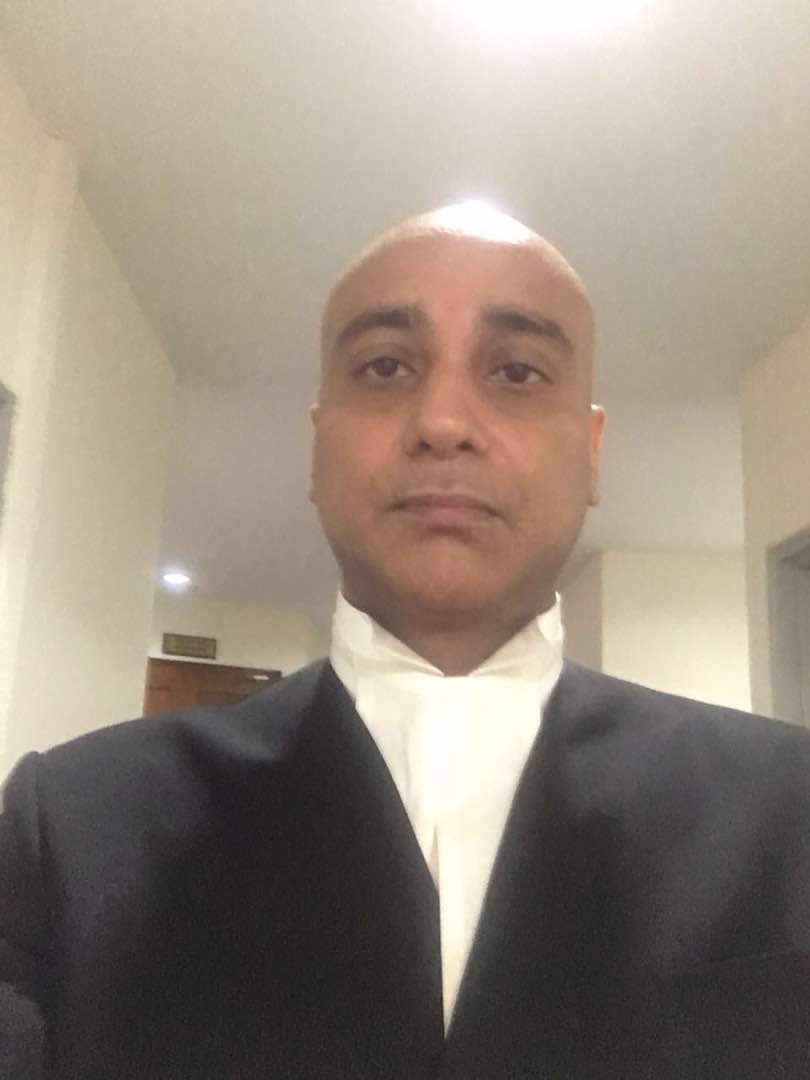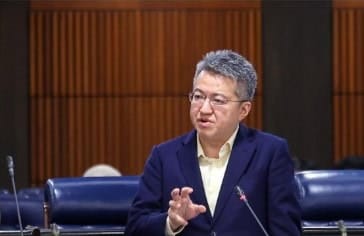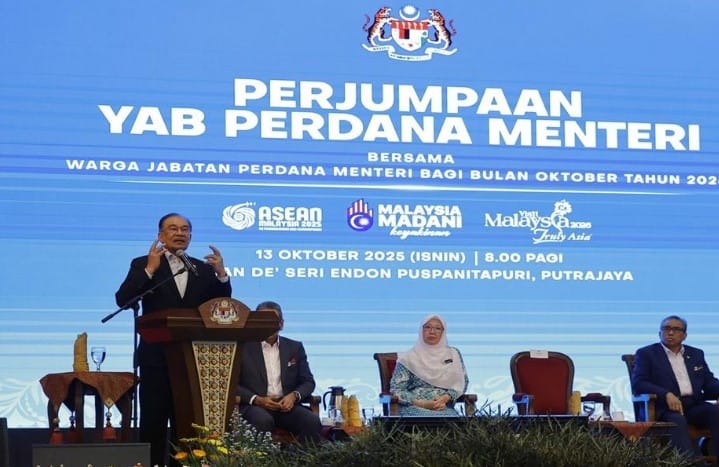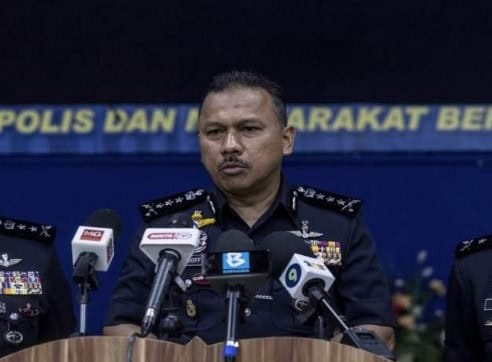
Lawyer Dato' Seri Rajan Navaratnam
Recently there has been much discourse on money laundering in view of many high profile personalities and politicians being charged in Courts for offences under the Anti-Money Laundering And Anti-Terrorism Financing Act 2011 (AMLATFA).

The latest to claim trial is Lawyer Datuk Hafarizam Harun (pic) who claimed trial to two money laundering charges amounting to RM15 million involving former prime minister Datuk Seri Najib Razak.
It would appear that the General public are not aware on the effect and implications this Act may have on them. NMT interviewed senior lawyer, Dato’ Seri Rajan Navaratnam so that the public will be able to understand it better and know what to do to avoid being part of money laundering.
What is money laundering?
Money laundering is not a new crime and has been carried out since the early ages. He said according to Historian Sterling Seagrave merchants had been laundering money for more that 2000 years so as to keep their wealth invisible and safe from the continuous extortion by bureaucrats. For example in the United States, visible stages of money laundering can been seen during the prohibition period where organized criminal institutions started legalizing their profits from the sale of alcohol by diverting them to other forms of legal businesses. Essentially money laundering is the act of legitimizing proceeds from any illegal activity by putting the money through scheme or series of transactions through entities, organizations and individuals so that at the end of the trail of the said transactions, the proceeds from these illegal activities would appear clean and legitimate.
Common ways to launder money
Some of the commonly methods used in laundering monies are cash smuggling where monies are smuggled across borders despite limits being imposed by each country, establishment of shell companies where the monies are deposited into already existing businesses to develop an atmosphere of legitimacy, Underground banking such as Hawala and the Offshore accounts to avoid an audit trail as most offshore institutions has no physical presence and are not regulated and therefore may refuse to provide any assistance by revealing their clients details to any investigating authorities from the other countries.”
Money laundering is commonly used by criminals and corrupt public officials as they need to hide their ill-gotten gains from bribes, unauthorized use of public funds and kick-backs.
Stages of money laundering
There are 3 stages of money laundering that is the placement stage, layering stage and integration stage. At the placement stage the money is put back into the financial system such as purchase of gambling chips, purchase of foreign currencies, repayment for loans or credit cards, using legitimate businesses to disguise the illegal proceeds by issuance of legitimate receipts.
Secondly is the layering stage which is the most complex and involves sophisticated financial transactions such as converting monies into monetary instruments and purchase of material assets either locally or abroad using offshore companies or proxy identities to avoid detection.
Finally there is the integration stage wherein the monies derived from illegal activities are returned back to the criminals through the financial system based on fictitious transactions such as false loans, false invoices, fictitious sales and turnovers from businesses, contracts and deeds.
Anti Money Laundering and Anti-Terrorism Financing Act 2001 (AMLATFA)
The United States of America was one of the first countries globally to enact money laundering laws titled Money Laundering Control Act 1986. Subsequently other countries such as the United Kingdom and France had formulated similar laws. In Malaysia, The Malaysian Anti Money Laundering Act was first passed in 2001 and was subsequently renamed to Anti Money Laundering and Anti-Terrorism Financing Act 2001 commonly known as AMLATFA. The said Act provides for investigating authorities to freeze, seize and forfeit assets and also imposes reporting obligations on reporting institutions such as banks, insurance companies, money changers, estate agencies and other persons as prescribed under the First Schedule of AMLATFA.
Section 4 of AMLATFA states that any person who engages in or event attempts to engage in or abets in the commission of money laundering commits an offence and shall be liable to a fine not exceeding five million ringgit or to imprisonment for a term not exceeding 5 years or both.
Under AMLATFA money laundering means a person who engages directly or indirectly in a transaction that involves proceeds from an unlawful activity. For AMLATFA to be operative, the proceeds must be from any illegal or unlawful activity. Hence it must be shown that the person was aware that the proceeds were derived from an unlawful activity.
Difficulty to prove awareness of unlawful activity
The practical difficulty that arises is whether a person was in fact aware or had the requisite knowledge that the monies received or that a person whom had engaged in the transaction of receiving monies had the knowledge that the monies did involve proceeds from an unlawful activity. However AMLATFA does provide that the investigating authorities may prosecute a person for money laundering offences if it can be inferred from the objective factual circumstance that the person knew or had reason to believe that the source of the monies were derived from any unlawful activity. This is where the difficulty arises. Therefore the test for determination if an offence had been committed under AMLATFA is subjective and will depend on a case to case basis.
What is needed for conviction?
I am of the view that the for a person to be charged under AMLATFA, the prosecution must prove that the person whom had received monies was actually aware or based on the factual circumstances, had sufficient reasons to believe that the monies received from any party were from an unlawful activity. In short the prosecution will have to prove that the person actually knew that the source of the said monies were derived from an unlawful act or evidence will have to be shown that based on the factual circumstances, that person ought to have known that the source of funds were from an unlawful activity. Once either of these 2 facts are established, the burden of disproving them will then be on the person accused of money laundering.
Each transaction would have to be looked at on a case to case basis. However, the Malaysian Courts had on many occasions held that in order for a person to be convicted for money laundering, the prosecution would either have to prove that the person charged with such an offence had direct knowledge that the transaction involved proceeds from any unlawful activity or alternatively the prosecution could also secure a conviction if the prosecution is able to prove, that based on the inference of factual circumstances, the person either had indirect knowledge or had reason to believe that the transaction contravenes AMLATFA.

How to report suspicious transactions?
Recently Bank Negara Malaysia had provided guidelines to the public to raise awareness and give guidance on AMLATFA in that in any transaction, the public should take certain precautionary measures such as to ascertain the identity of the individual such as his identity card number, address, nationality and purpose of transactions. In some cases if the transactions appear to be suspicious, then the public is advised to seek information on the source of funds or if the need arises to file a suspicious transaction report with BNM, which could easily be done via email. For more info on how to report, click this link.
-NMT





More Stories
PM Assures Protection For officials Acting Against Corruption
Police Open Investigation Into Israeli Flag Incident In Kelantan
No Compromise On Sexual Case, Offenders To Face Firm Action – Fadhlina